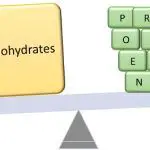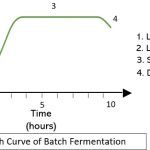The sympathetic & parasympathetic nervous systems are two components of the autonomic nervous system. These are responsible for controlling and manipulating our involuntary actions. We can differentiate SNS and PNS depending on their responsibilities and action potential. The SNS mobilises the body in stressful situations such as danger, sports, and fights. Thus, it … [Read more...] about Difference Between Sympathetic and Parasympathetic Nervous System
Difference Between Carbohydrates and Protein
The carbohydrates act as fuel or a source of energy for the cells. The subsequent phases of carbohydrate metabolism generate energy molecules. Our bodies use this energy to conduct all mechanical, physical, and metabolic tasks. Whereas proteins facilitate a range of metabolic functions. For example: Constructing and maintaining a healthy body Catalyzing a variety of … [Read more...] about Difference Between Carbohydrates and Protein
Difference Between Batch and Continuous Fermentation
Batch and continuous fermentation are the two prominent industrial processes. These are generally utilized to produce specific metabolic components, but they vary greatly depending on nutrient supply, types of system, product quantity and quality etc. Batch fermentation refers to the generation of the desired metabolite in small batches. It is a closed system, and thus the … [Read more...] about Difference Between Batch and Continuous Fermentation
Difference Between Exponential and Logistic Growth
The population of any region is characterised with respect to its growth rate. Exponential and Logistic growth models are two typical but important growth models that can be used to track the population's growth rate. Exponential growth is characterised by the rapid expansion of the population that is unaffected by any upper limit. Contrarily, logistic growth refers to a … [Read more...] about Difference Between Exponential and Logistic Growth
Difference Between Vitamins and Minerals
An overall physical and psychological growth necessitates the right amount of nutrients in the form of a balanced diet. Similarly, vitamins and minerals also have their own significance in the existence of the living system. Vitamins on one side are the organic components that are manufactured within the living bodies of microorganisms, plants, and animals. Whereas minerals … [Read more...] about Difference Between Vitamins and Minerals





